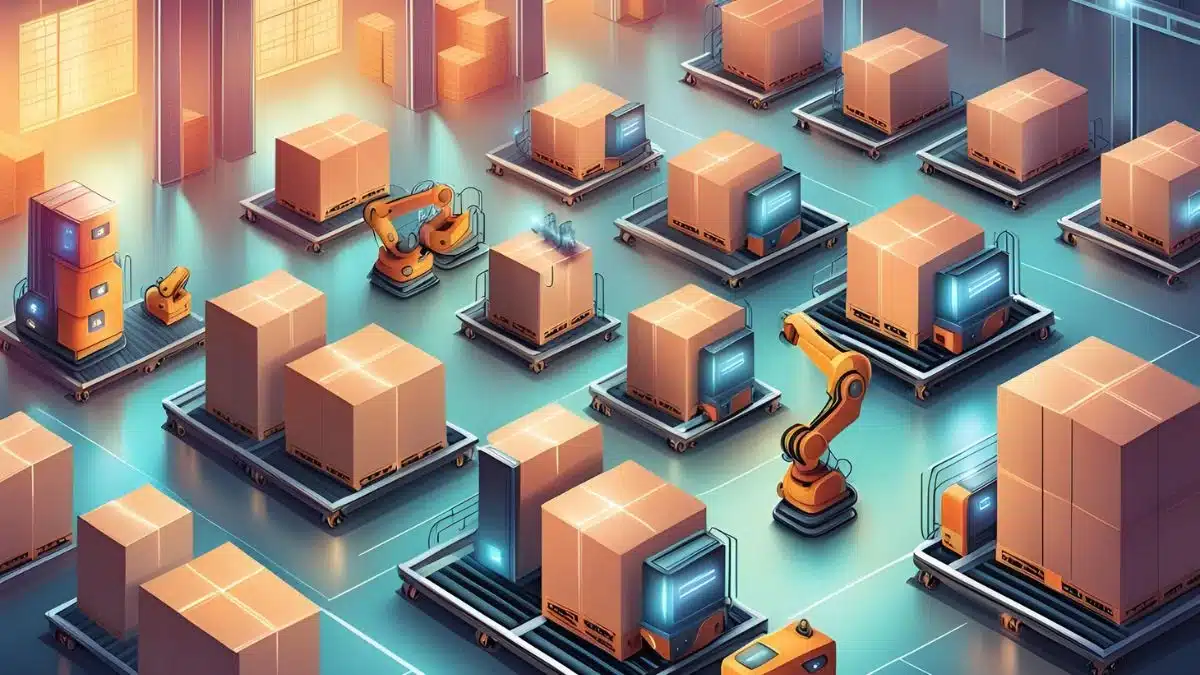As a business owner, you know that efficient and cost-effective operations are crucial to the success of your business. One area where automation has been making significant strides in recent years is warehouse management. With the help of automated systems, warehouse automation can increase productivity, reduce costs, and improve accuracy in order fulfillment.
Warehouse automation can be achieved with the help of a warehouse management system. It is a software application that manages and controls the movement and storage of inventory within a warehouse. It provides real-time visibility into inventory levels, locations, and movements, allowing for accurate tracking and efficient management of warehouse operations.
Table of Content:
Table of Content
What is Warehouse Automation
Warehouse automation is the use of technology and machinery to automate various aspects of warehouse operations. This includes material handling, inventory management, order fulfillment, and other tasks associated with storing and moving goods within a warehouse.
One of the main goals is to improve operational efficiency. Companies can reduce labor costs, increase throughput, and improve accuracy by automating tasks previously performed manually. Automation can also improve safety by reducing the risk of accidents that can occur when employees perform physically demanding tasks.
In addition to these technologies, modern warehouse management can also involve using software and systems to manage and optimize warehouse operations. For example, companies can use a Warehouse Management System (WMS) to track inventory levels, optimize storage locations, and improve order fulfillment speed and accuracy.
How Warehouse Automation Works
Warehouse automation works by leveraging technology and machinery to perform tasks that were previously performed manually. The goal is to improve operational efficiency, accuracy, and safety while reducing costs.
The first step is to identify the tasks that can be automated. This can include tasks such as material handling, inventory management, order picking, and transportation. Once these tasks have been identified, businesses can choose the appropriate technologies and systems to automate them.
One of the most common technologies used in modern warehouse management is conveyor systems. These systems use belts, rollers, or other mechanisms to transport goods throughout the warehouse. They can be used to move goods from one area of the warehouse to another or to transport items to and from loading docks. Conveyor systems can reduce manual handling and improve order fulfillment speed and accuracy.
Also Read: 4 Key Benefits of Warehouse Automation in Singapore
Types of Warehouse Automation Works
Warehouse automation has become increasingly popular in recent years as businesses seek to improve operational efficiency and reduce costs. There are several types that can be used, each with its own set of benefits and drawbacks. For instance:
Basic warehouse automation
This type of automation uses simple technologies such as barcode scanners and basic conveyor systems. Smaller warehouses with relatively low inventory volumes and low operations complexity levels usually use this.
Warehouse system automation
This type of automation involves warehouse management systems (WMS) and automated storage and retrieval systems (AS/RS). WMSs are used to manage inventory and optimize warehouse operations, while AS/RS systems use conveyors to automatically move and store inventory in designated locations. Medium to large-sized warehouses with higher volumes of inventory and more complex operations use this.
Mechanized warehouse automation
This type of automation involves the use of mechanical technologies such as automated guided vehicles (AGVs) and palletizers. AGVs are self-guided vehicles that can transport goods throughout the warehouse, while palletizers are used to automate the process of stacking and moving pallets. Larger warehouses with high volumes of inventory and relatively simple operations use this.
Advanced warehouse automation
This type of automation involves using cutting-edge technologies such as robotics, artificial intelligence (AI), and the Internet of Things (IoT). Advanced warehouse automation can include technologies such as collaborative robots (cobots), which work alongside human employees, and automated drones for inventory management. Typically, businesses use it in very large warehouses with high levels of complexity in their operations.
How to Activate Warehouse Automation
Activating warehouse automation can seem like a daunting task, but with the right approach and tools, it can be a game-changing move for businesses looking to optimize their supply chain operations. For instance, here are five steps to activate it:
Create a team
The first step in activating is to create a team that will be responsible for implementing the new technologies and systems. This team should be made up of employees with diverse skills and expertise, including IT professionals, operations managers, and warehouse staff.
Collect data
To achieve this successfully, it is essential to have access to data regarding your current supply chain and crucial warehouse operations. This includes inventory levels, order volume, and employee productivity. Therefore, Businesses can use this data to identify areas where automation can be most beneficial and set goals for improvement.
Additionally, integrating barcode tracking software can enhance data accuracy and streamline warehouse automation. By using barcode tracking software, businesses can efficiently track inventory movement, reduce errors, and improve overall operational efficiency.
Evaluate inventory control
One of the key areas to evaluate is inventory control. This includes evaluating the accuracy of inventory counts, identifying areas where inventory shrinkage occurs, and determining the optimal inventory levels for the business. Evaluate the current method and determine how automation will affect it.
Apply warehouse management system
Once the team has evaluated current warehouse operations and identified areas for improvement, the next step is to apply a warehouse management system (WMS). A WMS can help automate many aspects of warehouse operations, including inventory management, order picking, and shipping.
Hashmicro warehouse management system offers a module that helps optimize multi-warehouse efficiency, faster goods retrieval, and reduced storage costs. Additionally, its easy-to-use system and customizability, along with mobile system integration, make it a much-needed help for your business.
Brainstorm a suitable warehouse system
The final step is to brainstorm suitable warehouse automation technologies and systems. This might include automated storage and retrieval systems (AS/RS), automated guided vehicles (AGVs), and robotics. The team should also evaluate each technology based on its cost, ease of implementation, and potential impact on warehouse operations.
Conclusion
In conclusion, warehouse automation has the potential to revolutionize the way businesses manage their supply chain operations. By automating various aspects of warehouse operations, businesses can increase efficiency, accuracy, and productivity, while reducing costs and minimizing errors. However, implementing a warehouse system is a complex process that requires careful planning, evaluation, and execution.
Hashmicro offers a warehouse management system that is easy to use and also helps businesses to lower costs, boost employee engagement, and enhance security protocols. Therefore, the entire supply chain can gain from improved relationships with customers and suppliers. Additionally, with the Productivity Solutions Grant, get up to 50% off for your company’s solutions.
FAQ About
Warehouse Automation
-
What are the 4 types of industrial automation?
The four main types of industrial automation are:
Fixed Automation (Hard Automation): Designed for high-volume production with dedicated equipment performing repetitive tasks. It’s efficient but not flexible for changes.
Programmable Automation: Suitable for batch production, where equipment can be reprogrammed for different tasks. It offers some flexibility with moderate setup time.
Flexible Automation: Allows real-time changes and quick reprogramming with minimal downtime, perfect for diverse product lines.
Integrated Automation: A fully connected and automated system where machines, software, and data work together seamlessly with minimal human intervention. -
What are the three levels of warehouse automation?
Warehouse automation generally operates on three levels:
Operational Level: Basic automation like barcode scanners, conveyor belts, and simple inventory management systems for faster material handling.
Managerial Level: Systems like Warehouse Management Systems (WMS) and Automated Storage and Retrieval Systems (AS/RS) to optimize storage and track inventory.
Strategic Level: Advanced automation using robotics, AI, and Internet of Things (IoT) for data-driven decision-making and predictive analytics. -
How many types of WMS are there?
There are mainly three types of Warehouse Management Systems (WMS):
Standalone WMS: A basic system focused solely on warehouse operations like inventory tracking and order fulfillment.
Cloud-based WMS: A flexible, scalable system hosted on the cloud, offering real-time data access and easier integration with other software.
Integrated ERP WMS: A module within an Enterprise Resource Planning (ERP) system, connecting warehouse operations with broader business processes like accounting, procurement, and sales.








































